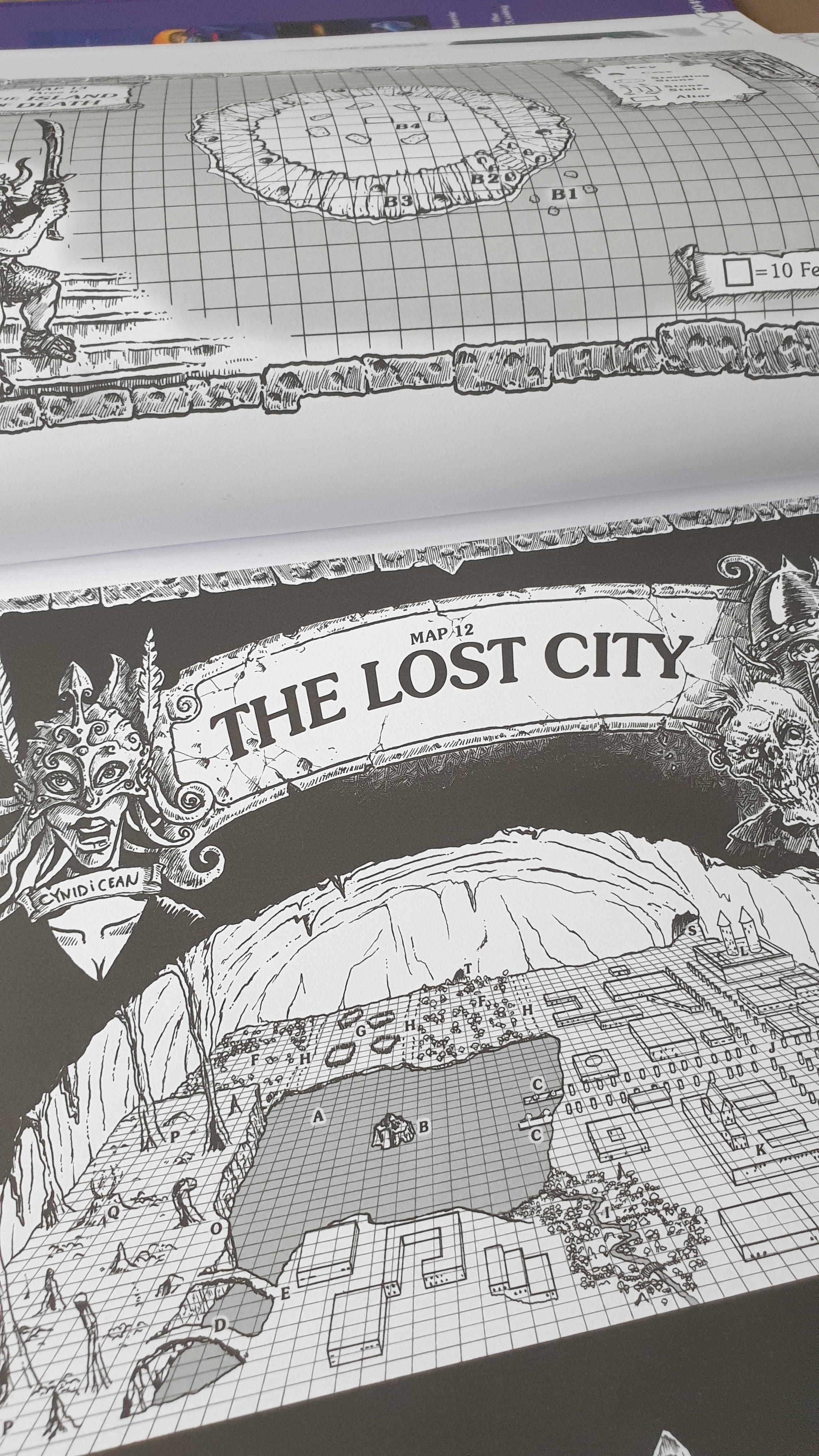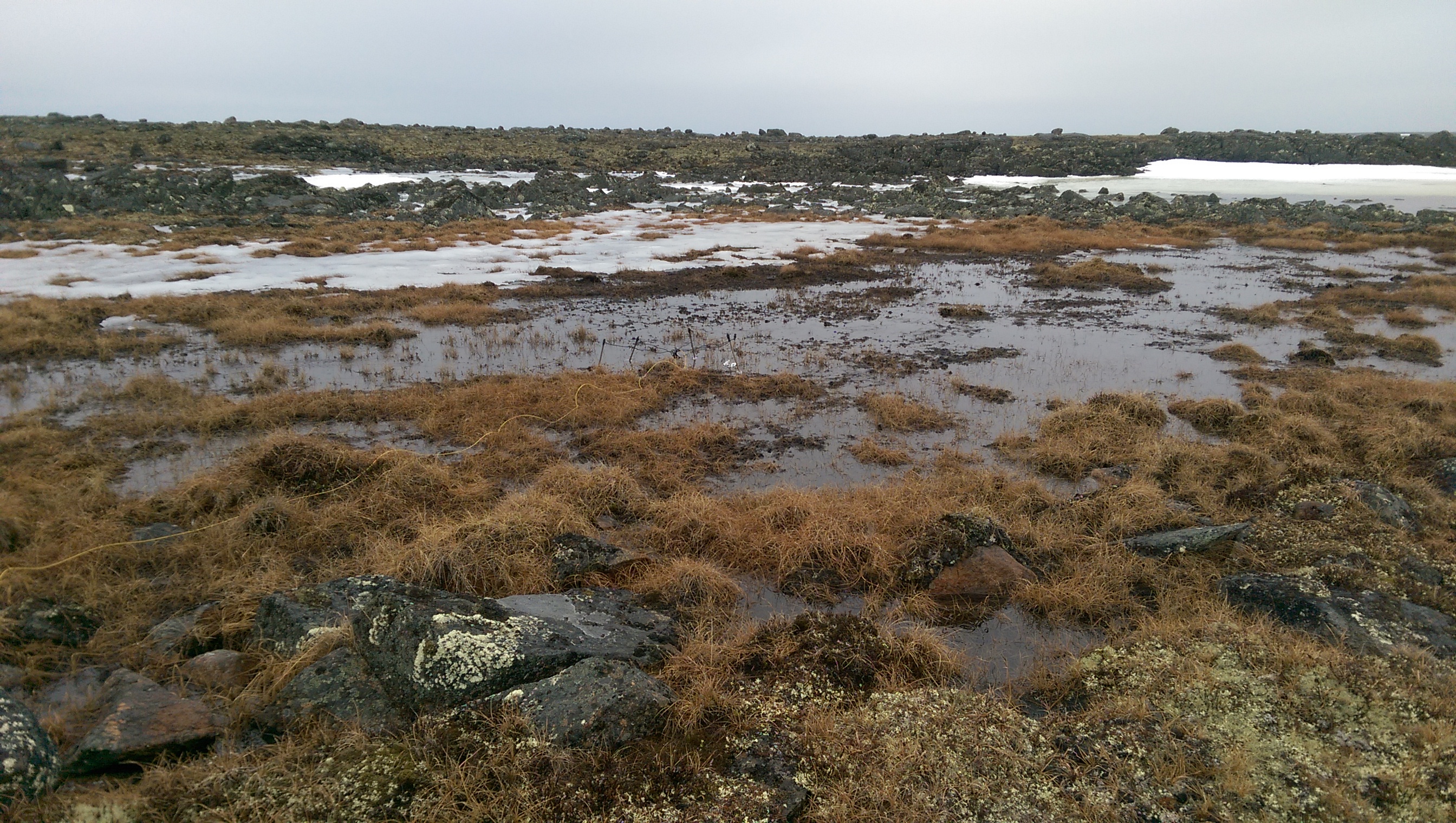Goblin says: we can arm wrestle for 10%. But I warn you, I am stronger than I look.
Centrist, progressive, radical optimist. Geophysicist, R&D, Planetary Scientist and general nerd in Winnipeg, Canada.
troyunrau.ca (personal)
lithogen.ca (business)
- 3 Posts
- 79 Comments
Image source? I’m interpreting this as post-flooding mud that uniformly covers the ground and only one spot was cleared :)
I run theatre of the mind, often somewhat improvised. Exploration is hard, particularly if you want there to appear to be any logic involved.
I use a very broad rule for myself, excepting dungeons. Any location should have three branching exploration options at most three levels deep. That means you can fully explore a location in at most 9 rooms. A branch should proceed thematically, and I will often wing it. Not every room needs and encounter, but every room should be interesting. Rely on senses other than sight to add flavour.
Example: a mad wizard’s cottage in the woods. Description: “you enter the foyer, and there is a door to either side, and stairs leading up to a mezzanine. You can smell something dank from the left door and you can see some bookshelves at the back of the mezzanine. The right door appears unremarkable.”
It’s entirely trivial now for the players to decide where they want to explore. Three branches. The unremarkable door can be a bedroom or storage closet or something. The stinky door can be a kitchen that was left untidy and became mouldy, with a backroom that leads to an overgrown greenhouse now home to a shambling mound. The mezzanine can be a library with a workshop behind yet another door, and a hidden door behind a bookshelf going to a room that only contains a standing mirror.
Fuck, this sounds interesting. Wizard has been gone for a while, where? Maybe through the mirror? What was he working on? Etc.
In a four hour session, we’ll be lucky to get through two or three such locations, depending on whether combat is involved. Over time, I assemble larger threads from almost entirely improvised beginnings, so I can make callbacks.
The barbarian threw the druid up into the air and the druid had animal shapes held as an action with the trigger “once in range” ;)

 71·4 months ago
71·4 months agoDeath of the Author, 101.

 2·8 months ago
2·8 months agoWater usage is also problematic. But that’s another story. It’s a multi-parameter optimization problem, but different people weight parameters differently.

 10·8 months ago
10·8 months agoHowever, some UA crops (for example, tomatoes) and sites (for example, 25% of individually managed gardens) outperform conventional agriculture. These exceptions suggest that UA practitioners can reduce their climate impacts by cultivating crops that are typically greenhouse-grown or air-freighted, maintaining UA sites for many years, and leveraging circularity (waste as inputs).
Tomatos it is then ;)
It’s really hard to compete with the efficiency that economies of scale provide. So this result isn’t unexpected.
It doesn’t however negate the other positive impacts of urban gardening – in particular, the impacts on the people doing the gardening (everything from psychology, vitamin D, immune system benefits to playing in the dirt, etc.).

 5·8 months ago
5·8 months agoThe kindness of admins is a requirement of pretty much all internet infrastructure. Email servers are the same, no? And it gets even harder with proprietary networks – if the admins are being unkind, you can just switch discord servers or whatever. Anyway, I digress.
Ouch. I know Bandcamp isn’t owned by its founders anymore, and the new owners in theory are sketch… But it’s still close to the best webstore ever conceived for music. The payment processing alone is worth it. What is Faircamp in that space?
DM trying to get you to pass the bottle.

 11·9 months ago
11·9 months agoNot a shill. Don’t like Nvidia. But, this drop-in replacement is more like a framework for a future fully compatible drop-in replacement than a fully functional one. It’s like wine from two decades ago to windows – you might get a few things to work…
Such a good comic. There should be more swords in them though 🗡️
Well, your eyes would be fried well before you reach 95%. Apparently the blueshift would make quite a lot of ionizing radiation. Hard to replicate on your phone ;)
My favourite published campaigns are the most sandboxy. The Lost City had a sanctioned hardbound 5e conversion by Goodman Games. It’s just this underground city with dozens of temples and other locations in immediate proximity to one another, and you can sort of do them in whatever order. But there’s hints and suggestions about where to go next.

Happens in published campaigns just as much, but you can at least use the book as a hammer and keep slapping them with it until they’re back on the rails.
Homebrew is fantastic because you can steer where your players go, provided they go somewhere interesting.
The safety program makes sense if it was designed by a kobold…
Play a Dwarf civilization in Anbennar (EU4 mod). It’s epic. Almost this epic: https://youtu.be/34CZjsEI1yU
Line the apples up next to each other, I guess. Sort of like taking a single slice through multiple carrots on the cutting board at once. Harder to do with apples given their shape, but I’d the knife is big enough, or you’re counting a slice as “single continuous motion” then it is probably valid.
I can’t think of any other physical solution that isn’t a joke, so this is the most probable puzzle solution. In a D&D setting I might require a slight of hand check with a very low DC to pull off the single slicing motion.



I let my players make checks: “what would my character know in this situation?” History roll. Me as DM: “your character would have gone to kindergarten and learned the number 2”